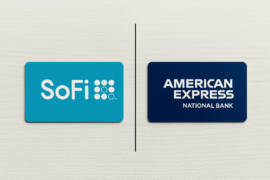This article may contain references to products or services from one or more of our advertisers or partners. We may receive compensation when you click on links to those products or services. Nonetheless, our opinions are our own.
The information presented in this article is accurate to the best of our knowledge at the time of publication. However, information is subject to change, and no guarantees are made about the continued accuracy or completeness of this content after its publication date.

Updated by Albert Fang
If you’ve never heard of a robo-advisor, you’re probably curious about what they do. Saving and investing can help people achieve financial independence and debt relief by giving them more control over their personal finances. A robo-advisor does just that by making these options available to them at a lower cost than traditional models. It is important, however, to take into account the various features that each robo-advisor offers when searching for a good one to take control of your finances. Should you choose between Stash vs Wealthfront or Stash vs Acorns? Look at some of the options that are out there and see if one of them better fits your needs.
Getting Started With a Robo-advisor
The following are some of the best services for newbies, but this list is far from comprehensive. Trying to make a decision between services such as Stash vs PlayBook is confusing for the beginner, so research each service thoroughly.
Wealthfront
A well-known name in the world of robo-advisors, Wealthfront has consistently been rated as one of the best platforms for new investors in general. For the new investor, tools and services for managing investments can be found here. Its greatest asset is its ability to fully automate the process of investing money. There are no withdrawal or trade commission fees, but new users must keep a $500 minimum balance in their accounts. There is also a small 0.25% fee for most accounts.
For long-term goal planning, Wealthfront tends to be the best platform due to its wide range of options and goal setting services, as well as digital financial planning tools and progress trackers. On the other hand, fractional trading is not supported, there is no live human adviser available, and the chat and customer service options are somewhat limited.
Stash
Stash is yet another robo-advisor service designed to help novice investors learn about the ins and outs of investing. There are millions of people who do not have bank accounts because of financial difficulties or a poor credit rating, which is why CEO Brandon Krieg founded the service. Depending on the account type, there is no minimum balance requirement to sign up for Stash, and the monthly fee ranges from $3 to $9. It is the best platform for new investors and account holders who want to educate themselves on the process. You can invest in your interests like socially responsible investments. It is the only robo-adviser with a guidance and education system like this, and it also provides access to fractional shares. In contrast, there is no account management, no tax loss harvesting or tax services, and no human brokers or financial advisors.
Acorns
Acorns is a novel service that operates in a manner that makes sense, but has not really been done before. Acorns allows account holders to link a bank account or credit card account, at which point when purchases are made on the account, Acorns rounds up the purchase to the nearest dollar and invests the difference. It is designed to take control (and potential mistakes) out of the hands of the investor, and increase investment accounts incrementally. It automatically invests spare change that would otherwise go in a change jar, and offers cashback at certain retailers. There’s also quite a bit of content available for those looking to educate themselves. On the downside, it tends to have higher fees on small account balances compared to its competitors.
Playbook
Playbook is a somewhat different service than many of the other robo-advisors out there. Many of these types of services are catered towards individuals who aren’t making a lot of money and might not have much extra to spare on investing. Playbook, on the other hand, markets its services to those making over $100,000 a year. It focuses on optimizing taxes and automatically putting extra money in various places that ensure that investing is compounding. It allows the account holder to look for tax advantages in ways they had not previously thought of. Some of these include 401(k) plans, IRAs, and Roth IRAs. The $19 monthly fee for the service is pennies for most account holders, and it provides opportunities for individuals to reduce their taxes on a higher salary.On the other hand, it does not offer much in the way of education, compared to some other services like Wealthfront, and live assistance is somewhat lacking.
Voted "Best Overall Budgeting App" by Forbes and WSJ
Monarch Money helps you budget, track spending, set goals, and plan your financial future—all in one app.
Get 50% OFF your first year with code MONARCHVIP
Summary
For those who know they need to do more to improve their finances but aren’t sure where to begin, robo-advisors can be a great help. If you make less than $100K a year, it won’t be difficult to choose between Stash vs PlayBook, but if you are getting started, choosing between Stash vs Wealthfront or Stash vs Acorns might take more effort. Only a small sample of the many services available are included in this review; however, some of them provide features that some investors may find useful. As a result, Acorns may be a better option for those who frequently forget to monitor their portfolios. But if you’re looking to learn more about your finances in order to better manage your money, Stash might be the better choice.
Paid non-client endorsement. See Apple App Store and Google Play reviews. View important disclosures.
Nothing in this material should be construed as an offer, recommendation, or solicitation to buy or sell any security. All investments are subject to risk and may lose value.
FAQ
1. Do I need to use the mobile application for each of these services?
Playbook does not actually have an application yet, while the others do. All four services are accessible online through a web browser, although the mobile applications appeal to users of all the services as they are easier to use and more convenient.
2. What are the age requirements for these services?
To open an account, all of the services require the account holder to be over the age of 18. However, Wealthfront allows for some custodial accounts for those under 18.
3. What is the difference between an IRA and a Roth IRA?
With a traditional IRA, you contribute to the account before or after tax dollars, and the money is tax deferred until it is withdrawn. With a Roth IRA, you contribute after-tax dollars, and the account grows tax-free and allows for penalty-free withdrawals.

Reviewed and edited by Albert Fang.
See a typo or want to suggest an edit/revision to the content? Use the contact us form to provide feedback.
At FangWallet, we value editorial integrity and open collaboration in curating quality content for readers to enjoy. Much appreciated for the assist.
Did you like our article and find it insightful? We encourage sharing the article link with family and friends to benefit as well - better yet, sharing on social media. Thank you for the support! 🍉
Article Title: Stash vs Wealthfront vs Acorns vs PlayBook Comparison: Which Roboadvisor App to Pick?
https://fangwallet.com/2022/06/12/stash-vs-wealthfront-vs-acorns-vs-playbook-comparison-which-roboadvisor-app-to-pick/The FangWallet Promise
FangWallet is an editorially independent resource - founded on breaking down challenging financial concepts for anyone to understand since 2014. While we adhere to editorial integrity, note that this post may contain references to products from our partners.
The FangWallet promise is always to have your best interest in mind and be transparent and honest about the financial picture.
Become an Insider

Subscribe to get a free daily budget planner printable to help get your money on track!
Make passive money the right way. No spam.
Editorial Disclaimer: The editorial content on this page is not provided by any of the companies mentioned. The opinions expressed here are the author's alone.
The content of this website is for informational purposes only and does not represent investment advice, or an offer or solicitation to buy or sell any security, investment, or product. Investors are encouraged to do their own due diligence, and, if necessary, consult professional advising before making any investment decisions. Investing involves a high degree of risk, and financial losses may occur including the potential loss of principal.
Source Citation References:
+ Inspo












































